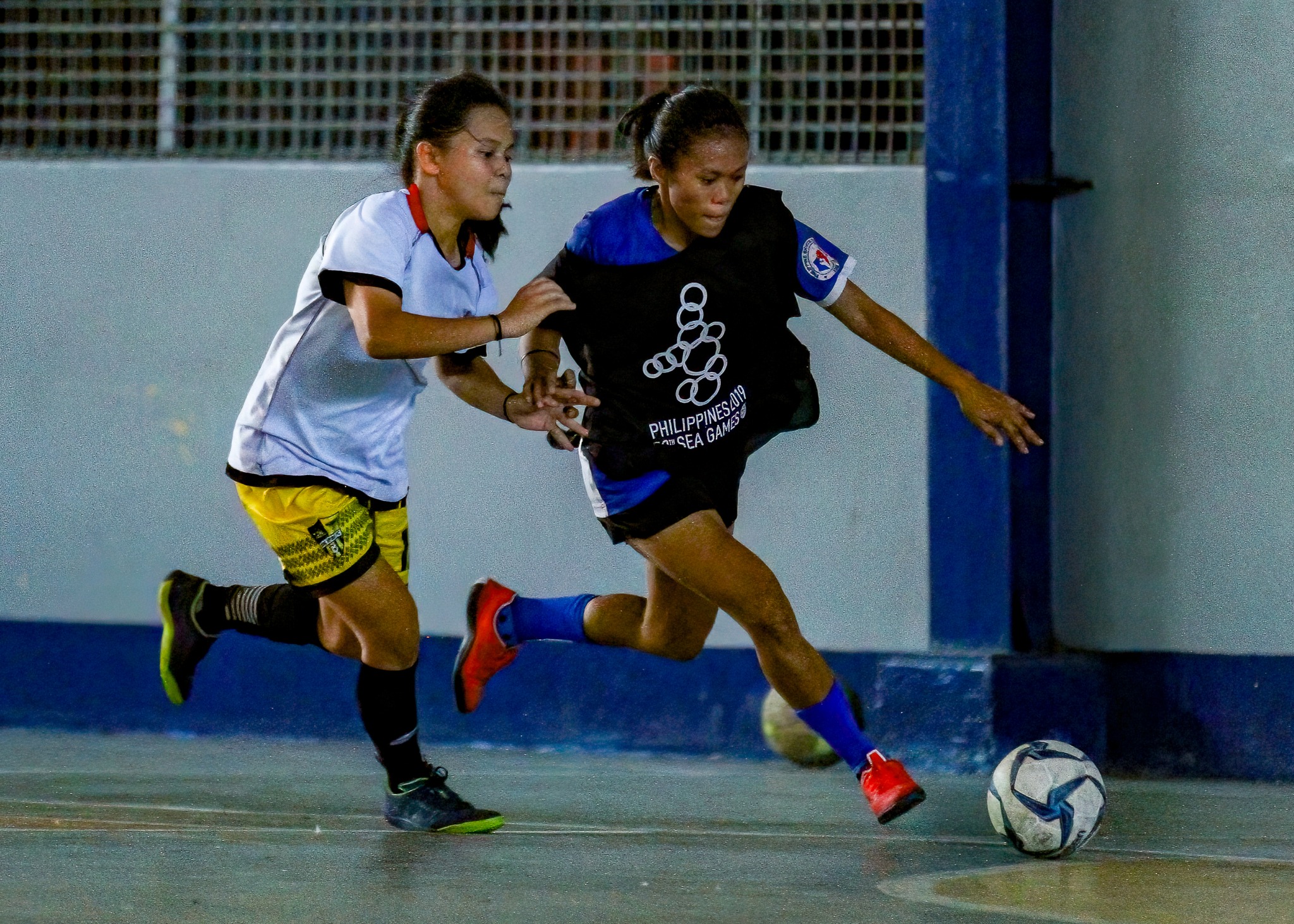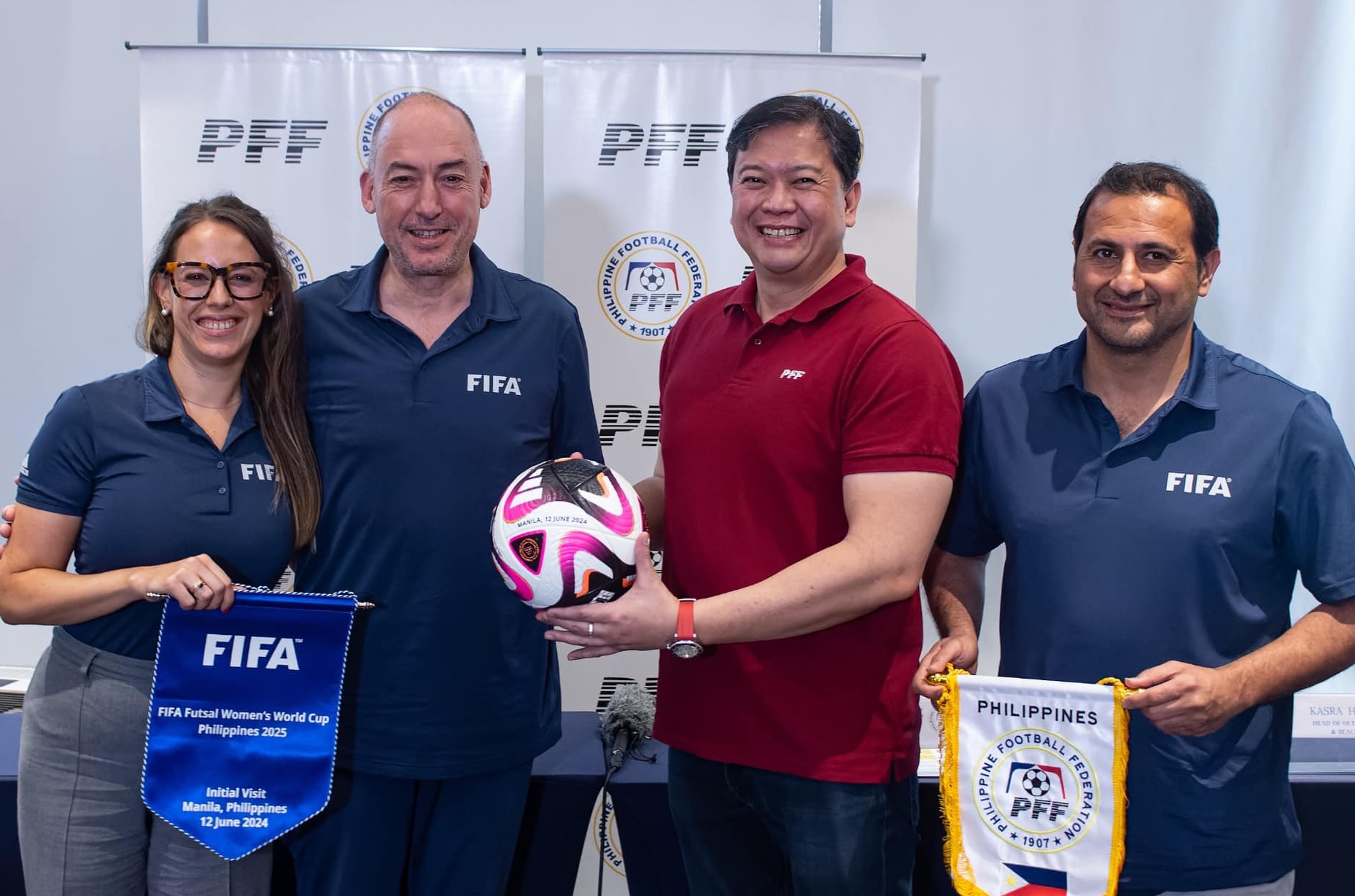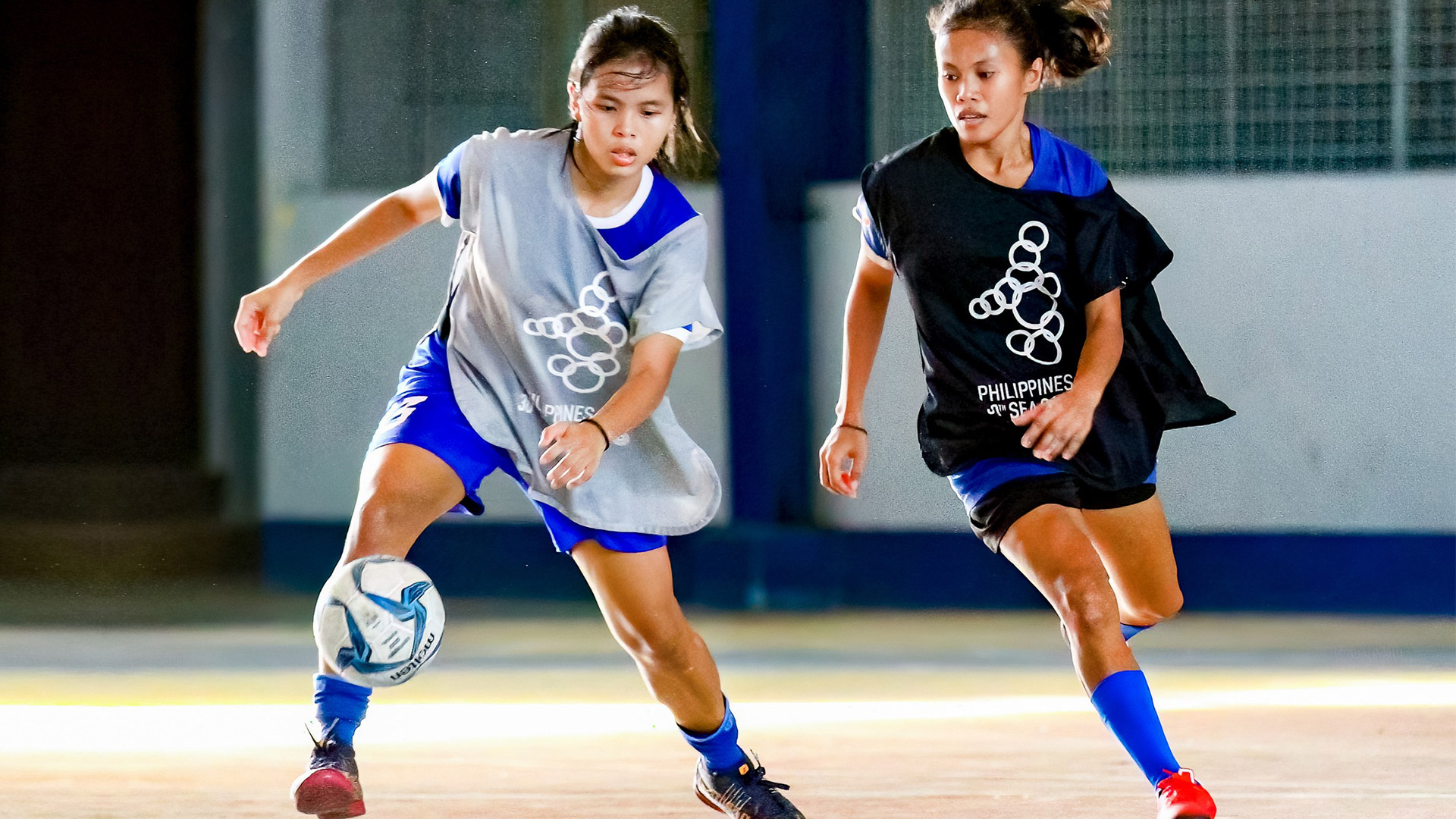The Philippines will host the first-ever World Cup for women for the five-a-side version of football. It could be a game-changer.
Last week Philippine Football Federation (PFF) president John Gutierrez welcomed visiting FIFA officials who were in town to check out possible venues for the inaugural FIFA Women’s Futsal World Cup, which the Philippines was selected to host in the fourth quarter of 2025.
According to Gutierrez, we beat out bids from football and futsal powerhouses like Spain, Brazil, and Italy to snag the right to host. It’s a major coup for the country. This is only the fourth FIFA World Cup for women, after the senior women’s World Cup, and U17 and U20 competitions.
Fifteen of the best national women’s futsal teams will come to do battle, with the host nation added as the 16th. The venues have yet to be confirmed, but the visitors did say they are open to having one in Manila and one outside. This promises to be a special occasion, one that can literally spark a grassroots football explosion in the Philippines.
But before we continue, let’s answer the question of what futsal is.
The art of futsal
Futsal, from the Spanish term “futbol de sala” (indoor football, not living room football), is a form of football played by teams of five on a smooth surface that is 40 meters long by 20 meters wide, at least for elite play. It supposedly originated in Uruguay and is played in many footballing countries.
Unlike regular association football, futsal doesn’t have the offside rule, and matches are forty minutes long, divided into two halves of 20 minutes each. The clock winds down to zero, as it does in basketball. Kick-ins replace throw-ins when the ball goes out.
The futsal ball is smaller than the size 5 used in regular football, more like a size 4 commonly employed for youth games. It is also designed to bounce less and feel heavy since the futsal court is firmer than grass.
Elite futsal surfaces can be taraflex-like sheets of synthetic material or are sometimes made of hundreds of small plastic tiles. The game can also be played on wooden floors or cement. It is an indoor sport but for recreational play you can certainly play futsal outdoors weather permitting.

The basic skills of shooting, passing, ball control, and dribbling are the same as in regular football, but the tactics and some technical aspects are different. You play futsal with flat-soled shoes, and many players like to control the ball by stepping on it and rolling it under their feet. There is a lot less heading in futsal.
Like basketball, futsal allows flying, in-and-out substitutions, as many as you like in a match.
Futsal teaches basic ball control and how to manage in tight quarters with defenders swarming over you. It’s very fast-paced, and quick thinking is paramount. There is also much less rough play allowed.
One of the great aspects of futsal is that it’s much more high-scoring than football. A usual 11-a-side game has an average of about 3 goals per game. In elite futsal, the average is over double that. This despite the fact that a game is less than half as long and the futsal goal is much smaller, two meters tall and three meters wide. One imagines the high scoring is because a smaller court means the ball is always just a few dribbles and passes away from a scoring chance. Not the case in a 105 x 68 m football pitch.
This makes futsal an absolute hoot to watch. End-to-end action in every game, a feast of goals, and plenty of skill and creativity. Here is a men’s World Cup game from 2021 featuring Iran and Uzbekistan combining for 17 goals.
Futsal has been played in the Philippines for decades now. There are men’s and women’s leagues as well as youth competitions. I’ve also heard talk that it may soon be a UAAP sport. But the game is nowhere near the level of other Asian countries like Indonesia, where there is a proper fully professional futsal league. (In mature football nations players tend to stick to one discipline and not go back and forth.)
This is why our hosting of the first Women’s Futsal World Cup will be a massive boost to the game.
Why is the Philippines’ hosting a big deal?
With the Philippines hosting the first FIFA Women’s Futsal World Cup, it will be all over the news, on social media feeds, and on the networks. Kids will look at the action and the bite-sized highlights on TikTok and IG and say to themselves: “Hey, I can do that.”

Futsal is the ideal grassroots form of football. Not only is the ball smaller, perfect for growing feet, but the playing area is so much smaller too. While a proper futsal court is massively bigger than a 28 by 15-meter FIBA court, a hoops court is fine for youth recreational futsal. So in theory any community in the country with a basketball court and someone with welding skills (to make the goal frames), can have football.
There are other reasons why futsal is perfect for the Philippines. Unlike football, no special shoes are needed to get started. There are proper futsal shoes, but pretty much any flat-soled athletic shoe will do. I have played futsal with badminton shoes.
Futsal will help young players with their technique more than eleven-a-side for one simple reason: they have more time on the ball. They are only sharing it with nine more players instead of 21. More touches means more experience and better quality in the long run.
Many of the world’s greatest players developed their fundamentals playing futsal, including icons like Lionel Messi, Cristiano Ronaldo, and Neymar.
I have been told by some Filipino football observers that one issue with girls’ football in the Philippines is that some girls don’t want prolonged exposure to the sun to darken their skin. I think it’s terrible that some Filipinas feel this way, but nonetheless, it is a real phenomenon. Futsal completely solves this by playing everything indoors.
This is also a reason why futsal is climate change-proof. The extreme heat we get every summer prevents outdoor football from being played from 10:00 AM to 2:00 PM. The heat even caused one death of a youth player a couple of years ago. But thanks to the indoor nature of futsal, you can play all day with no chance of heatstroke.
Futsal is also the perfect game for urban poor communities. It puts the game within reach of those in crowded low-income areas. UAAP champion Cian Galsim is from a GK futsal community in Mandaluyong. Dynamic Herb Cebu midfielder Daniel Gadia followed the same path, establishing his foundation in a futsal group in Sta Mesa Heights. His skills got him recruited for the San Beda high school team, and from there he proceeded to UP for university, where he was the league MVP and a champion as well.
Futsal has the power to draw exponentially more players and fans into the game. And with next year’s FIFA Women’s Futsal World Cup coming to the Philippines, the spotlight on the game will be strong.
It also helps that the Philippines will not only be participating but might even have a competitive team. Last year the Philippine women’s team played in a triangular competition at home versus the national sides of Indonesia and New Zealand. The Filipinas battled hard but lost their opening games. However, in their final consolation match against the Kiwis they won 1-0 with a dramatic late goal from Althea Rebosura. Start watching 35 seconds into this clip.
Key to this project is the presence of Dutch coaching legend Vic Hermans, who coached that side and is currently preparing the men’s national team for competitions later this year. Hermans played for the Netherlands in the 1989 Futsal World Cup, where they lost in the final to Brazil. He has managed the Netherlands, Thailand, and Iran since then, and is highly esteemed in the futsal world.
Hermans will presumably pilot the women’s team again in the World Cup. He has plenty of time to build on last year’s side, which was fully homegrown, to get them ready for the world’s best. Should we spring a surprise as the women’s football did in their World Cup, the buzz will be even stronger.
Futsal can be a cornerstone of a Philippine football renaissance. The fourth quarter of 2025 can’t happen fast enough.
Banner images from the Philippine Football Federation.
Related Stories:
Here’s How We Think The Philippines Can Boost Its Club Football Scene
Spain’s LALIGA Brings Institutions Together To Discuss The Future Of Philippine Football
Ex-Azkal Nate Burkey Finds His True Calling in La Union
